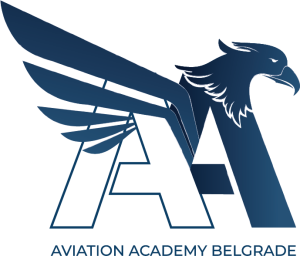Aviation Academy (Vazduhoplovna akademija)
The Aviation Academy Belgrade is Serbia’s premier institution for aviation education, offering specialised training at both the Vocational Education and Training (VET) (EQF level 4) and College of Applied Studies (EQF level 6). As a state-accredited institution, the Academy is dedicated to providing students with the skills and knowledge necessary to succeed in the aviation industry while adhering to the highest standards.
Vocational Education and Training (VET) School
The VET school offers eleven dual educational profiles, combining theoretical education with practical training in collaboration with industry partners. These dual programs, including specialisations in aircraft maintenance, ground operations, and aviation safety, are fully aligned with national, international, and EASA standards. As part of the curriculum, Ecology and Environmental Protection is an obligatory subject, reflecting the Academy’s commitment to sustainability and environmental responsibility in aviation.
College of Applied Studies
The College of Applied Studies offers bachelor’s degrees in areas such as aircraft maintenance engineering, piloting, and air traffic control. These programs are designed to meet national, international, and EASA requirements, ensuring that graduates are equipped with the knowledge and skills to thrive in the global aviation industry.
Airfield and Fleet for Flying Lessons
The Academy owns its own airfield and a fleet of airplanes and helicopters, providing piloting students with hands-on, real-world flying experience. This direct access to flight training ensures students receive the most practical and professional development possible.
International Cooperation and Erasmus+ Participation
The Aviation Academy holds the Erasmus Charter for Higher Education and is involved in Erasmus+ mobility and cooperation projects, including KA1 and KA2 initiatives. These projects offer students and staff opportunities for international exchanges, internships, and collaborative learning, further enriching the educational experience.
Work-Based Learning (WBL) and Industry Partnerships
The Academy incorporates Work-Based Learning (WBL) into its programs, providing students with valuable hands-on experience through partnerships with leading aviation companies. This real-world experience enhances their skills and employability, ensuring they are ready to meet the demands of the aviation industry.
Commitment to Sustainability and Digitalisation
The Academy is dedicated to integrating sustainability into its curriculum, with Ecology and Environmental Protection as a core subject. Additionally, the Academy places a strong emphasis on digitalisation, utilising tools such as Moodle, specialized apps, and AI to enhance learning and ensure students are equipped with the digital skills required in modern aviation.

